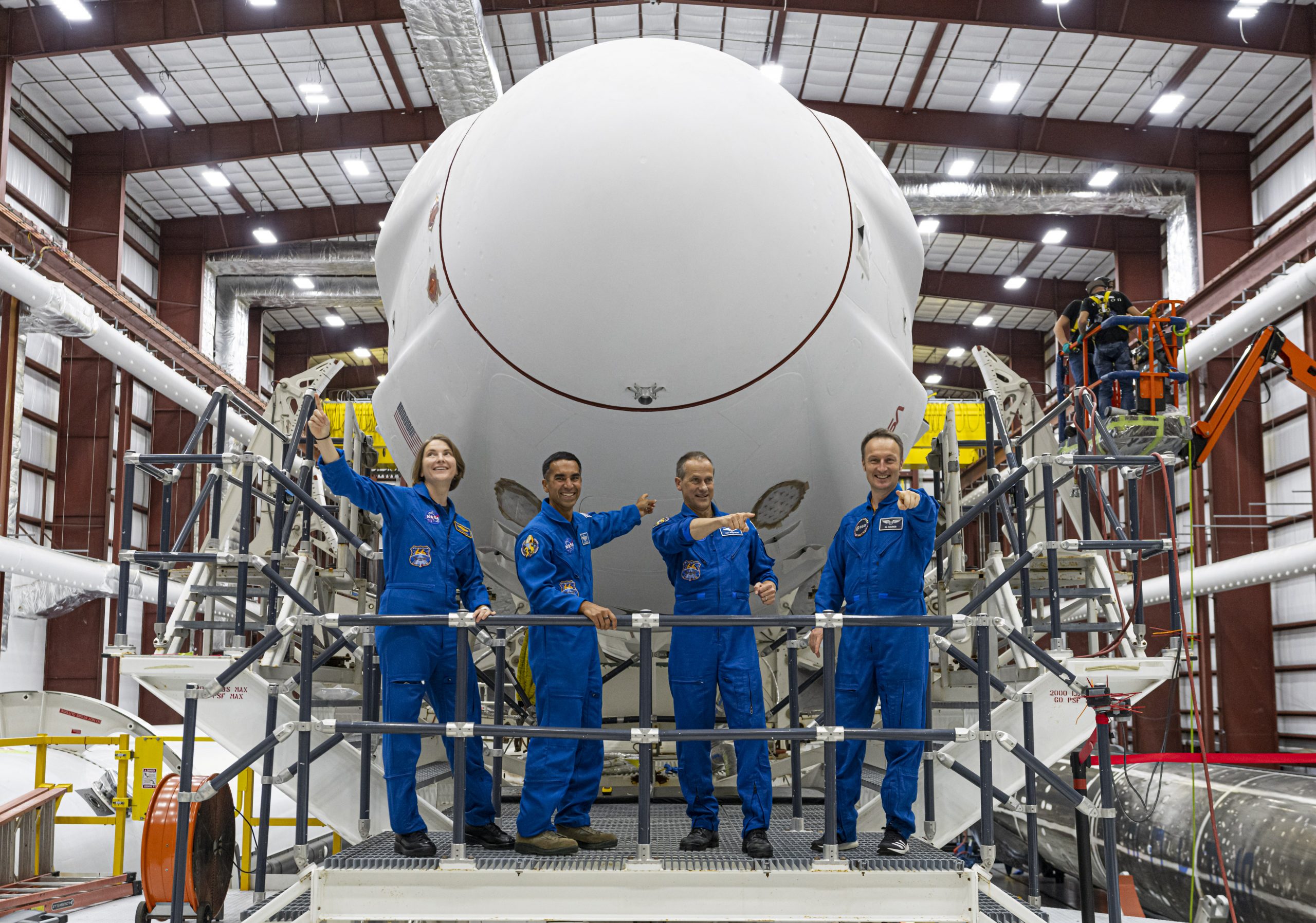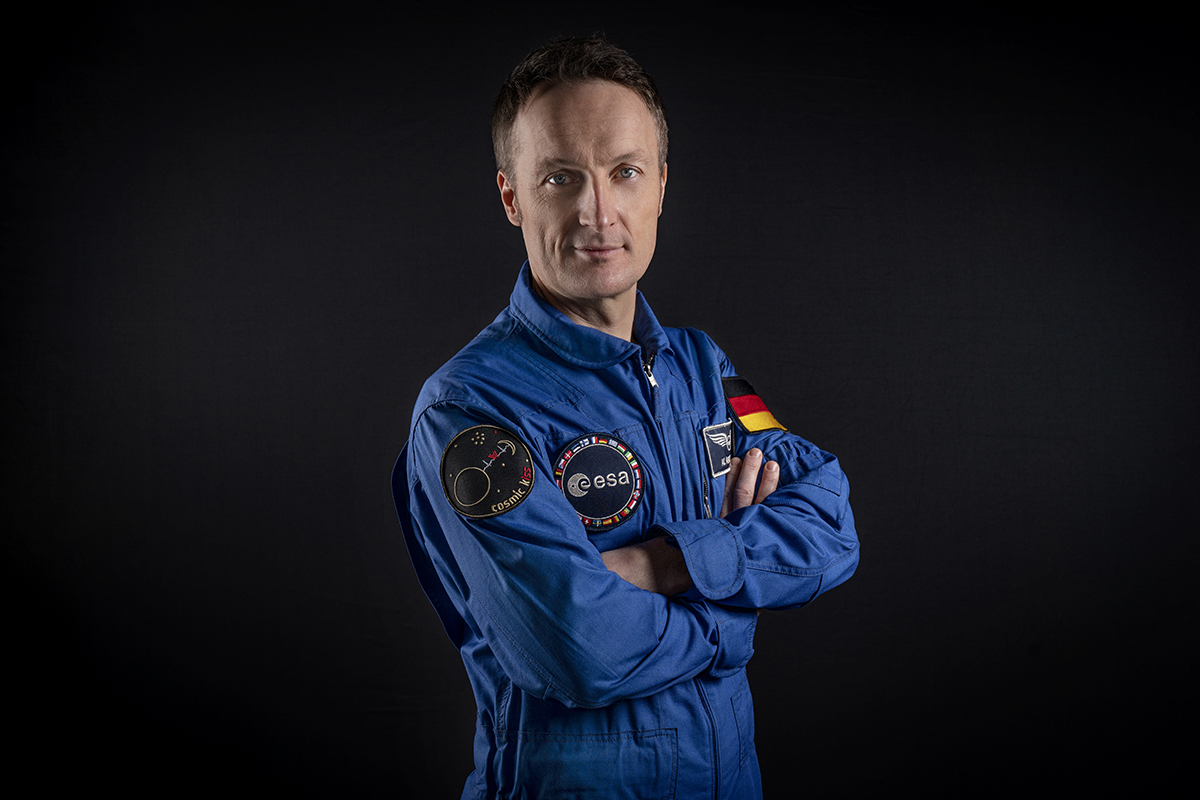Tune in from Wednesday 10 November at 21:45 GMT/22:45 CET to see ESA astronaut Matthias Maurer be launched to the International Space Station for his first mission, Cosmic Kiss. Liftoff is scheduled for 02:03 GMT/03:03 CET. Continuous live coverage will run on ESA Web TV channel 2 until the end of the International Space Station welcoming ceremony, which starts at approximately 03:20 CET (02:20 GMT) Friday, 12 November.
Initially scheduled for 31 October, the launch was delayed due to poor weather and a minor medical issue. However, with a favourable forecast and the crew in good health, all is now on track for liftoff atop a Falcon 9 rocket from NASA’s Kennedy Space Center in Florida, USA.
Collectively known as Crew-3, Matthias and his NASA colleagues Raja Chari, Tom Marshburn and Kayla Barron, will travel aboard the SpaceX Crew Dragon spacecraft Endurance and dock to the Space Station around 22 hours after liftoff.

Crew-3 astronauts Kayla Barron, Raja Chari, Matthias Maurer and Tom Marshburn. Credit: SpaceX
From Earth to orbit
During the journey to and from the Space Station, Matthias and Kayla will be mission specialists, working with spacecraft commander Raja and pilot Tom to monitor the spacecraft during the dynamic launch and re-entry phases of flight.
Matthias’s six-month Cosmic Kiss mission officially begins when he enters the Station, where he and his Crew-3 crewmates will be welcomed by Russian cosmonauts Anton Shkaplerov and Pyotr Dubrov and NASA astronaut Mark Vande Hei.
Anton is the current commander of the International Space Station. He took over the role from ESA astronaut Thomas Pesquet on 6 November, prior to Thomas’s return to Earth with Crew-2.
Cosmic Kiss is the first space mission for Matthias, who graduated as an ESA astronaut in 2018. Matthias will spend approximately six months supporting science and operations aboard the orbital outpost and is expected to perform a Russian spacewalk in support of the European Robotic Arm (ERA) activation, having certified in both the Russian Orlan and American Extravehicular Mobility Unit (EMU) spacesuits.

Matthias familiarises himself with the Russian Orlan spacesuit. ESA/Roscosmos.
Launch and docking timeline
| 21:58 GMT/22:58 CET | Wednesday 10 November | Suit-up begins |
| 22:43 GMT/23:43 CET | Wednesday 10 November | Crew walkout |
| 22:48 GMT/23:48 CET | Wednesday 10 November | Crew depart for launchpad 39A |
| 23:28 GMT/00:28 CET | Wednesday 10 November (GMT) Thursday 11 November (CET) |
Crew Dragon ingress |
| 00:08 GMT/01:08 CET | Thursday 11 November | Hatch closure |
| 01:28 GMT/02:28 CET | Thursday 11 November | Fuelling begins |
| 02:03 GMT/03:03 CET | Thursday 11 November | Liftoff! |
| 00:10 GMT/01:10 CET | Friday 12 November | Endurance capsule docks to Station |
| 01:45 GMT/02:45 CET | Friday 12 November | Hatch opening |
| 02:20 GMT/03:20 CET | Friday 12 November | Onboard welcoming ceremony |

Crew Dragon rendezvous and docking
Science in space
With a background in materials science Matthias is looking forward to supporting over 35 European and many more international experiments in orbit. These include investigations in human research, biology, materials science, fluid physics, environmental science and radiation, and technology. A few highlights include:
- Retinal Diagnostics, which uses a commercially available ophthalmology lens, adapted for use with a tablet in space, to capture images of astronauts’ retinas. Images and videos collected will be used to test and train artificial intelligence (AI) models that could automatically detect retinal changes in astronauts in the future and provide the ability to support patients and clinicians on Earth in remote or developing regions.
- Biofilms, which aims to determine which metal surface has the best anti-microbial properties on ground, in orbit or on Mars. Run in the Kubik facility – a temperature-controlled incubator for studying biological samples in Europe’s Columbus module – it will test the growth of bacteria such as human skin-associated bacteria Staphylococcus capitisunder microgravity conditions.
- EasyMotion, which will see Matthias test a specialised electrical muscle stimulation (EMS) suit while exercising to determine its effect in mitigating muscle and bone loss in microgravity.
For more information on science and operations Matthias will carry out in space, view the Cosmic Kiss mission brochure in English or German. Regular updates will also be provided on the ESA Cosmic Kiss mission page, ESA Exploration blog, @esaspaceflight Twitter and via Matthias’s own Twitter, Facebook and Instagram channels.
You can also shop the official Cosmic Kiss collection online at the ESA Space Shop and get in the space spirit with the official Cosmic Kiss mission playlist on Spotify.



